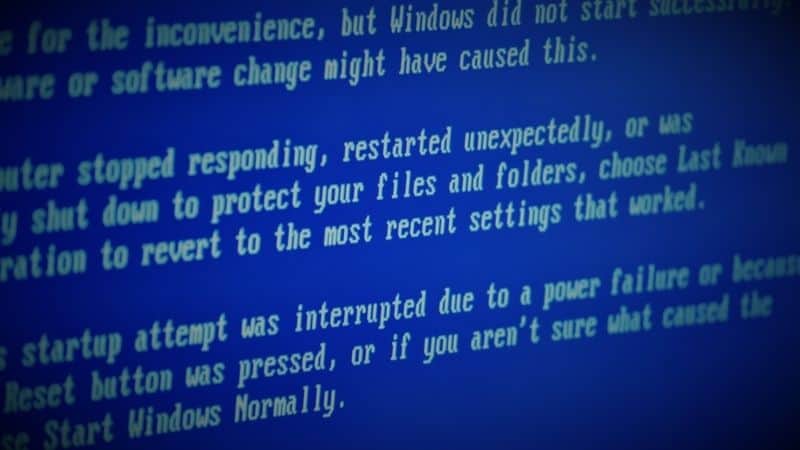How To Update BIOS On A HP Computer

Table of Contents
BIOS stands for Basic Input Output System and it is the most important part of a computer system. It controls all the basic functions of your PC like booting, power management, fan speed control, etc.
If you are facing any problem with your laptop or desktop then first check if there is an update available in the BIOS. Whatever the reason, you might need to update your BIOS to fix the problem you’re having.
Prime Day is finally here! Find all the biggest tech and PC deals below.
- Sapphire 11348-03-20G Pulse AMD Radeon™ RX 9070 XT Was $779 Now $739
- AMD Ryzen 7 7800X3D 8-Core, 16-Thread Desktop Processor Was $449 Now $341
- ASUS RTX™ 5060 OC Edition Graphics Card Was $379 Now $339
- LG 77-Inch Class OLED evo AI 4K C5 Series Smart TV Was $3,696 Now $2,796
- Intel® Core™ i7-14700K New Gaming Desktop Was $320.99 Now $274
- Lexar 2TB NM1090 w/HeatSink SSD PCIe Gen5x4 NVMe M.2 Was $281.97 Now $214.98
- Apple Watch Series 10 GPS + Cellular 42mm case Smartwatch Was $499.99 Now $379.99
- ASUS ROG Strix G16 (2025) 16" FHD, RTX 5060 gaming laptop Was $1,499.99 Now $1,274.99
- Apple iPad mini (A17 Pro): Apple Intelligence Was $499.99 Now $379.99
*Prices and savings subject to change. Click through to get the current prices.
But we understand that this sounds difficult and complex. Is updating BIOS something that can potentially brick your computer if you don’t do it right? How can you know where to start with it all?
Well, that’s where we come in. In the guide below, we’re going to be telling you everything you’ll need to know about updating BIOS on an HP Desktop or Laptop.
We’re going to explain a little bit about BIOS, how to update to the newest version, and how to do this safely with a step-by-step guide.
Let’s update your BIOS today!
What Is The Latest Version Of BIOS?
The latest version of BIOS is 1.20.0.1 which was released by Hewlett-Packard Company (HP) on May 6th, 2016.
This version contains some improvements but also some new features as well. Some of these changes include:
New Features
- Improved security
- New USB support
- Support for Intel® Core™ i7 processors
- Support for AMD Ryzen™ CPUs
- Support for NVIDIA® GeForce® GTX 10 series graphics cards
Improvements
- Improved performance when running Windows® 8.1
- Improved reliability when using Secure Boot mode
- Improved compatibility with Microsoft® Office 2013
- Improved compatibility with various software applications
To find out what's new in the latest version of BIOS, visit the official website here.
How To Update Your BIOS On HP Desktops And Laptops
Before You Begin…
You should always backup your data before updating something as fundamental as BIOS. This will mean that you will be able to restore your system to its original state if anything goes wrong during the process.
If you don’t want to lose any data, make sure you create a complete image of your hard drive before you begin.
You are also going to want to check which BIOS version you have on your Computer before downloading a new version. To do this, follow these steps:
1. Open your Computer's search bar function in the bottom left corner of your home screen.
2. Type in “Control Panel”
3. Navigate to “Administrative Tools”4
4. Navigate to “System Information.”
5. From here, you will be able to see a list of information about your PC. You should notice BIOS Version and its Date. Make sure you take note of this before closing down the window.
After that, you can follow this link here to search for the correct version of your BIOS. Once you have done this, you can proceed with the steps below.
Step
Download The Latest Version Of BIOS
The first thing you’ll need to do is download the updated version of BIOS from the link above.
You may need your product serial code to find the right one, you can find this either physically on your PC, or by using the Command Prompt function on your PC (CMD).
Make sure you save the file somewhere safe, so you can easily access it later.
Step
Extract The File
Once downloaded, open up your preferred archive manager and extract the file. For example, you could use WinRAR, 7zip, or even just double-click the file.
Step
Install The Updated BIOS
Once extracted, you’ll see a folder called “BIOS” inside. Inside this folder, you’ll find another folder called “Update”. Open this folder and copy the contents into the root directory of your HDD.
Step
Restart Your Computer
Now that you’ve installed the updated BIOS, restart your computer. When prompted, press F2 or delete to enter Setup Mode. Press Enter to continue.
Step
Select Language & Time Zone
Next, select your language and time zone. Then choose Finish.
Step
Click Next
When asked whether you’d like to install updates, click Yes.
Step
Choose Where To Store Updates
Choose where you would like the files to be stored. You can either store them in the same place as your current BIOS or in a different location.
Step
Confirm Installation
Click OK to confirm the installation.
Step
Reboot
After clicking Ok, wait until the reboot completes.
Step
Check That Everything Works
If all went well, you should now have an updated version of BIOS. Congratulations!
Final Thoughts
As you can tell, there are a few important steps to follow, but the overall process of updating your BIOS on an HP Computer or Laptop isn’t all that difficult.
It’s best to take your time and read through each step carefully, as some people may not know exactly what they’re doing.
Always double-check before taking a step that you won’t be able to change, and make sure you back up all the data you can before committing to an action.

